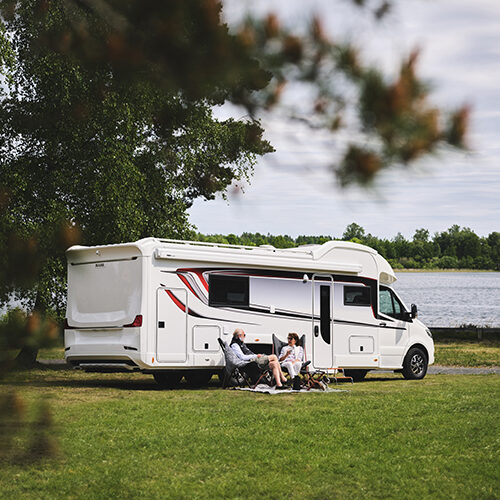Marije Onderwaater
Editorinvullen

The introduction of a digital driving licence from 2030 is the most striking outcome of a deal between the European Parliament and the EU Council. But for campers, something else is the news of this agreement. The new rules make it possible to drive campers over 3500 kg with a B driving licence. There are conditions attached to this.
The joint European directive for driving licences has existed since 1980 and changes regularly. For example, driving licences were made of paper until 2006 and in 2013 – with the third European driving licence directive – the citizen service number (BSN) was added to the driving licence. With the introduction of the fourth driving licence directive, which is still a while away, a great wish of camper enthusiasts is coming true: an increase of the B driving licence from 3500 kg to 4250 kg.
Thirteen months ago we already wrote about the introduction of the fourth driving licence directive, which Europe has been working on for some time. At the time, the European Parliament approved the directive, you can read more about this in the article below. But with that approval, the new driving licence was not yet available. That is why the parliament now entered into consultations with the Council of the European Union, in which ministers from the member states meet. Together they have agreed on the fourth driving licence directive, which aims to increase road safety. And this is urgently needed, because almost 20,000 people die on EU roads every year.
Holders of the current B driving licence are allowed to drive a vehicle up to 3500 kg. A heavier vehicle, such as a camper, requires a C1 driving licence. This rule has been under fire for some time now. Campers are becoming increasingly heavier – partly due to safety and environmental requirements. The electrification of the vehicle fleet, which is also slowly gaining momentum in the camping world, also brings with it the necessary weight.
Interest groups and industry associations – including the ECF (European Caravan Federation), the FICC (Federation Internationale de Camping et de Caravanning), camper club NKC and the KCI (Dutch association for the Camping and Caravan Industry) – have been lobbying for an increase in the permitted maximum mass for some time now. This would offer camper owners many more options. Not only driving a heavier camper, but also opting for additional options that increase the weight of a camper, such as an extra access door or an oven.
All that lobbying has been successful, because the upcoming fourth driving licence directive includes an increase in the permitted maximum mass to 4250 kg. But beware: this only applies to campers and ambulances, both fossil fuel and electric. It will soon be possible to drive a camper over 3500 kg and up to a maximum of 4250 kg with a B driving licence.
This will require training or an exam, writes Caravaning Industrie Verband e.V. (CIVD), which is committed to increasing the driving licence via the ECF: “It is up to the individual Member States to decide whether training, an exam or both are required. All vehicles with alternative drives do not have to be checked if the driver has held the driving licence for at least two years. In Germany, the measures are expected to be transposed into national law in 2029.”
The provisional agreement still needs to be approved by the EU Council and the European Parliament. EU countries have four years to transpose new provisions into national law and prepare for their implementation. So please be patient.
With the current – third – driving licence directive, holders of a B driving licence are still allowed to drive a camper with a maximum total weight of 3500 kg. A camper that exceeds this, or options that make a camper heavier, are currently still out of reach with a B driving licence. With the future increase, a camper owner will also have the option of driving a heavier camper.
People who have completed a training course, an exam or both. This is not necessary for campers with alternative drives, provided that the driver has held a driving licence for at least two years.
That will take until 2030.
In principle yes, although all Member States still have to incorporate the directive into their national laws. For example, they can choose for themselves whether people have to do a training, an exam or both before they are allowed to drive a heavier camper.
No, there are more changes. Another notable change is the introduction of a digital driving licence that you can store on your mobile phone. In the Netherlands, where a driving licence also serves as proof of identity, the validity period will be ten years. Furthermore, novice drivers will have a probationary period of at least two years, and stricter rules apply to them in areas such as alcohol and wearing a seat belt. Finally, it has been decided to allow eighteen-year-olds to be eligible to drive trucks under certain circumstances.
Spotted an error? Email us. We appreciate it!